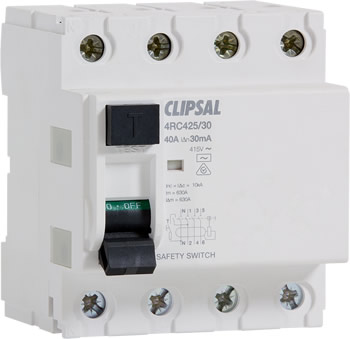 Safety switches protect you, your family and anyone visiting your home from electric shock. They turn off the power in a fraction of a second if a leakage of current is detected. This can happen if there is a faulty power point or electrical appliance, or you accidentally hit a live cable while drilling into a wall.
Safety switches protect you, your family and anyone visiting your home from electric shock. They turn off the power in a fraction of a second if a leakage of current is detected. This can happen if there is a faulty power point or electrical appliance, or you accidentally hit a live cable while drilling into a wall.
The State Government recommends that all Queenslanders, regardless of whether they own or rent, consider having safety switches installed on all circuits including power points, lights, air-conditioners, stoves, hot water systems and pool equipment, even if they are on a separate tariff.
In Queensland homes the types of circuits protected by safety switches will vary depending on the age of the home, whether it has been sold since 2002, rented out since 2006 or had other electrical installation work carried out since it was built. If you are unsure as to whether your home complies with the requirements for safety switches please contact us!
We have also provided some further information below to help you understand your requirements:
- In Queensland safety switches became compulsory on all power points for homes built after 1992 and in 2000 lighting circuits in new homes also required safety switches.
- Since 2002, when a home is sold, it either has to have safety switches fitted to the power points or the buyer has to have them fitted within three months of the property transfer date.
- Also since 2002 licensed electricians have not been permitted to perform electrical installation work on a home that did not have safety switches fitted to the power points, unless the work also included fitting a safety switch to the power points.
- Since 2006, if the home is rented, the property must have safety switches fitted to the power points.
Even if your home has a safety switch installed, one may not be enough to protect you from electric shock. A safety switch only protects you if it’s on that circuit.
Contact Levitt Electrical today to discuss making your home as safe as possible.
